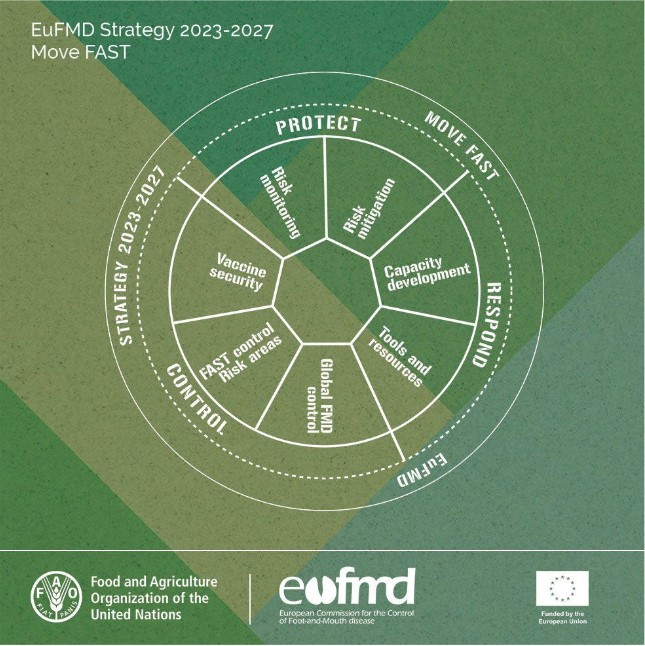Introduction
Welcome to the EuFMD Technical Documentation.
This documentation serves as a comprehensive guide to all EuFMD tools and dashboards, providing developers, system administrators, and other stakeholders with detailed information on how to effectively use, configure, and manage the tools built by the EuFMD.
This documentation is a work in progress.
Feel free to contribute over at EuFMD FAST docs.
About the EuFMD Program
The European Commission for the Control of Foot-and-Mouth Disease (EuFMD), established in 1954, is dedicated to combating foot-and-mouth disease (FMD) across Europe. Operating under the Food and Agriculture Organization of the United Nations, EuFMD collaborates with Member Nations and European neighbors to enhance preparedness and implement sustainable control programs. It also supports the global strategy for the progressive control of FMD and similar transboundary animal diseases (FAST) through partnerships with the European Commission’s DG-SANTE, the FAO, and the World Organisation for Animal Health.
The new program started in September 2023 and will run until 2027.

About DB Manager
A user interface that allows users to input and extract data.
About Economic Impact of FAST Diseases
A dashboard that allows user to visualise data.
About FAST REPORT
About Learning Path AI Recommender
About Milestones Dashboard
A web app dashboard that tracks the completion of yearly EuFMD Program Targets until the year 2027.
About Recommender System
A model that recommends learning pathways to country managers.
About RMT
RMT (Risk Monitoring Tool) is an interface that allows users to input data and obtain risk scores.
About TOM
TOM is a web-based Training Management System for veterinarians, developed for EuFMD/FAO. This app is a prototype built with Vue, Node/Express, Tailwind CSS & D3.
About Training Data Dashboard
A dashboard that allows users to visualize data.
About VADEMOS
VADEMOS is a stochastic risk analysis model to predict FMD vaccine numbers and an interactive user interface. The developed model was distributed with a web-based interactive interface built with R Shiny package. The tool is currently deployed with Shinyapps.io, a cloud service for R products, with a free plan.